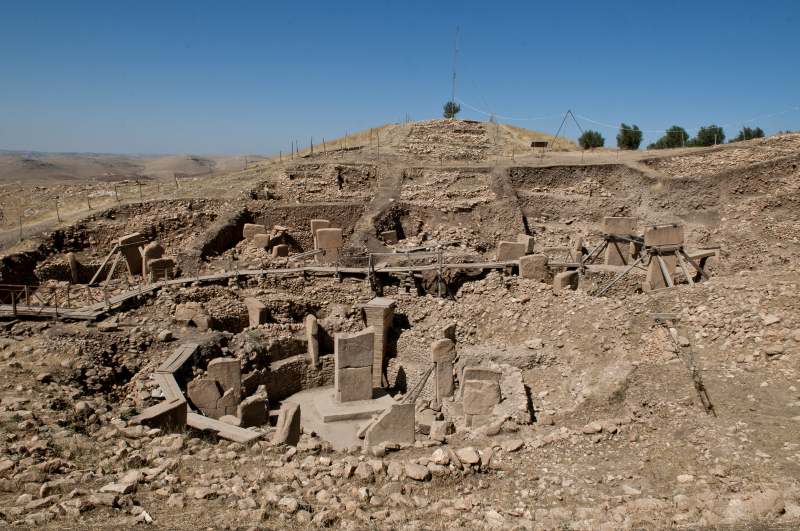Göbekli Tepe

Top 12 in Top 13 Stone Age Mysteries
No Stone Age list would be complete without mentioning Göbekli Tepe, commonly regarded as the world's first temple. Göbekli Tepe is in southeastern Turkey, approximately 55 miles (88 kilometers) east of the upper Euphrates. The 12,000-year-old site's discovery in 1994 sent shockwaves through the archeology world, putting into question a long-held idea that organized religion emerged only after tribes embraced agriculture. Archeologists became convinced during the early digs that the site was a ceremonial center, likely a burial or death cult complex, rather than a community.
Recent findings, such as evidence of homes, a massive receptacle and pathways for rainwater gathering, and hundreds of milling tools, are rewriting prehistory yet again. Researchers have also developed a computer technique to track the site's architectural architecture, notably three of the complex's truly huge round structures. They discovered that the pillars were purposefully put in their exact placements. They discovered that the design of the site is characterized by symbolic and geographical hierarchical layers that reflect changes in the spiritual realm as well as social structures of the period.
This discovery is significant since architectural design methods such as floor plans and geometry were supposed to have originated much later in history. To put things in perspective, Göbleki Tepe was built 6,000 years before Stonehenge, and the meaning of its sculptures, architecture, and ultimate purpose is still unknown. Of course, this adds to the mystery and appeal of the Göbekli Tepe. Every new discovery alters knowledge of the place and the history of humanity.
Abandoned: 8th millennium BC
Address: Örencik, 63290 Haliliye/Şanlıurfa, Turkey













